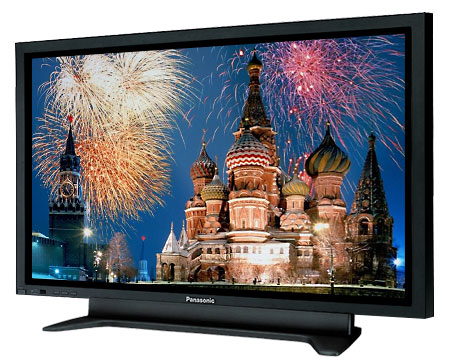 Flat-panel televisions used to fall under an “LCD vs. plasma” debate, where plasma had inherent advantages that made it the go-to option for home theatre setups. But as the years have worn on, LCD technology has usurped much of that and emerged as the most widely adopted TV technology today.
Flat-panel televisions used to fall under an “LCD vs. plasma” debate, where plasma had inherent advantages that made it the go-to option for home theatre setups. But as the years have worn on, LCD technology has usurped much of that and emerged as the most widely adopted TV technology today.
Times have changed and LCD technology now reigns supreme in the cutthroat TV market. Panasonic, the last major plasma manufacturer, has also hit hard times, seeing five straight quarters of losses in light of a rapidly shrinking plasma TV market. After hitting a high of $10.5 billion (U.S.) in 2009-10, the company’s plasma business is expected to fall under $5 billion by 2015, as consumer demand plummets in North America, Europe and Japan.
It wasn’t supposed to be this way for plasma, which always had an edge on LCD TVs with deeper blacks, richer colour saturation and better viewing angles. The drawbacks were that plasmas consumed more energy, were heavier and weren’t ideal for brightly-lit rooms. For the energy-conscious consumer with plenty of daylight seeping into their living room, that might have been enough to sway them to go the LCD-LED route.
Arguably the biggest knock plasma ever received was regarding the “burn-in” issue. Earlier plasma models were susceptible to this side-effect of the technology, where a static image, like a logo in the corner or a ticker at the bottom, would burn a permanent silhouette into the screen. As the technology improved, this became less of a concern, but the damage had been done.
Initially, plasmas also had the lion’s share of the market on panels larger than 40-inches. That changed dramatically in a short time, as LCDs above 60-inches could be found easily. And since plasma didn’t scale down below 32-inches, LCD screens could be found on anything from computers, watches, smartphones and tablets. This made the technology more ubiquitous.
The onset of LED backlighting helped improve black levels and colour saturation on LCD displays (though they still couldn’t match the depth of plasmas), while motion blur or “ghosting” became less of an issue with 120Hz and 240Hz refresh rates. LED-LCDs got thinner, lighter and more energy-efficient, adding even more incentive for consumers to shop around for those. The irony is that these innovations were largely aimed at bridging the gap with plasmas.
The level of choice has also been a factor. Pioneer’s Kuro line of plasmas were considered by home theatre enthusiasts to be the cream of the crop, but the business was sold off to Panasonic in 2008. Since then, Panasonic has taken on the mantle of plasma manufacturing, while Samsung and LG scaled back their lines dramatically, focusing more resources on LED-LCD, OLED and Ultra HD. Other manufacturers, like Sony, Sharp, Toshiba and Vizio have ignored plasma altogether.
Plasma has been declared dead before, but it still persists. It’s just a question of how long it will manage to stick around, particularly since the overall TV market has either stagnated or shrunken since a peak of 35 million sets were sold in 2009, according to the Consumer Electronics Association (CEA). In the last two years, only one of every 10 HDTVs sold was a plasma, which already puts it in a niche category. The introduction of 3D has done little to spur growth, and OLED and Ultra HD sets are still beyond what the average consumer can afford, putting the market in a slight state of auto-pilot.
That might give plasma a bit of a reprieve, particularly since they tend to be cheaper than their LCD counterparts. A 60-inch Samsung 3D plasma with a 600Hz refresh rate can be found for as low as $1,100 at some big box retailers. By comparison, a 60-inch LED-LCD with 3D and 120Hz refresh rate could be double the price.
If Panasonic does actually close down its plasma manufacturing infrastructure next year and stop research and development into the technology, as has been rumoured and officially denied by company executives, then the technology may indeed be in its last throes.
With the biggest manufacturer and evangelist for plasma panels potentially ready to wave the white flag, it’s hard to see how the technology can re-establish itself as a prominent option for consumers. In all likelihood, it would slowly descend into obscurity and become a has-been in the ever-evolving world of HDTVs.
That’s not guaranteed to happen, but history has shown that a piece of technology in decline usually doesn’t find its way back to the spotlight. Like Betamax, CDs and even desktop computers (to some degree), plasma may not be long for this world, but it will almost certainly be part of the TV conversation for years to come.




It would be a shame to see Plasma die. I still that, all other things being equal, it looks better than LCD. I find it interesting that CNET just gave the latest Samsung plasma rave reviews (though they still prefer Panasonic overall). Could this be proof that the technology isn’t dead, but just suffering from a lack of competition?